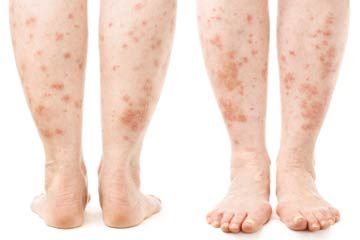Celebrities are often known for their great bodies -- especially their legs. In fact some, like star of "Entertainment Tonight" Mary Hart, even have insurance on their legs for $1 million or more [source: Getlen]. Surely these million-dollar limbs don't fall prey to unsightly red bumps otherwise known as folliculitis.
Whether or not you're a celebrity, chances are you or someone you've know has at one time suffered from folliculitis, a common, irritating skin rash that can turn into fluid-filled bumps. If you're experiencing it, you are probably not doing anything out of the ordinary to cause it. Folliculitis is an infection of the hair follicle, which occurs when a damaged hair follicle becomes clogged by bacteria, fungus, yeast or oils. There is no way to avoid damaging hair follicles -- it happens very often and probably without you even noticing. You can damage them while shaving or just by wearing clothes that are a bit snug [source: WebMD].
Advertisement
Although folliculitis is irritating and severe cases can lead to permanent baldness, this common skin irritation often clears up on its own or will respond fairly quickly to treatment [source: Mayo Clinic]. So, how can you clear up those recurring rashes? And is there a way to avoid folliculitis altogether and get those celebrity-caliber legs? There are many tactics to prevent folliculitis and several treatments to get rid of it -- , and many of which you can find over the counter and some that you can whip up at home.
Folliculitis has a wide variety of causes, ranging from clogging substances to hot tubs to dull razors. To learn more about your hair follicles, what damages them and how to prevent infections, keep reading.
Advertisement


